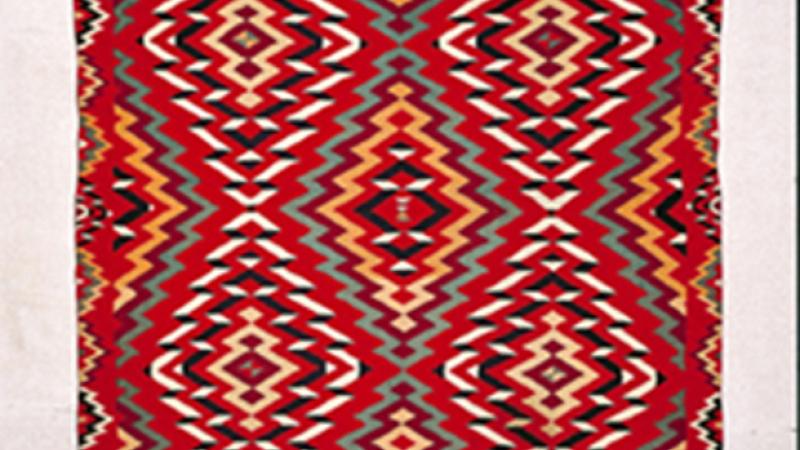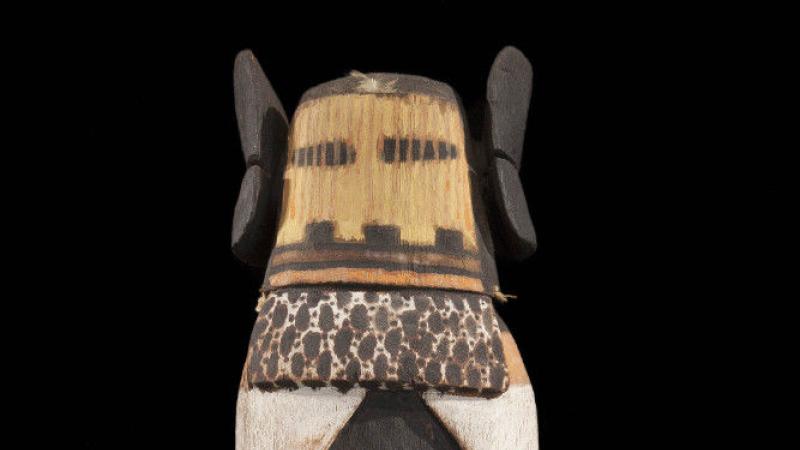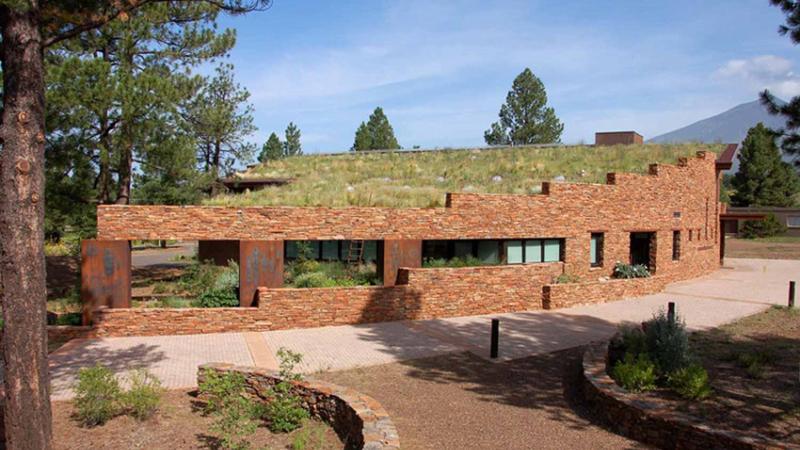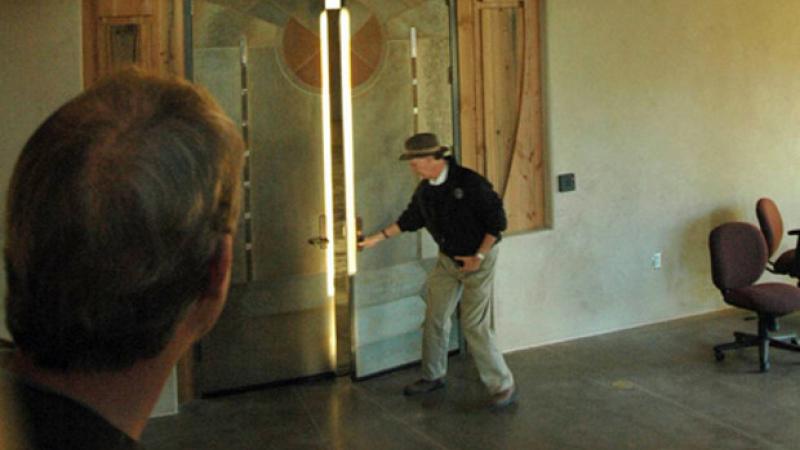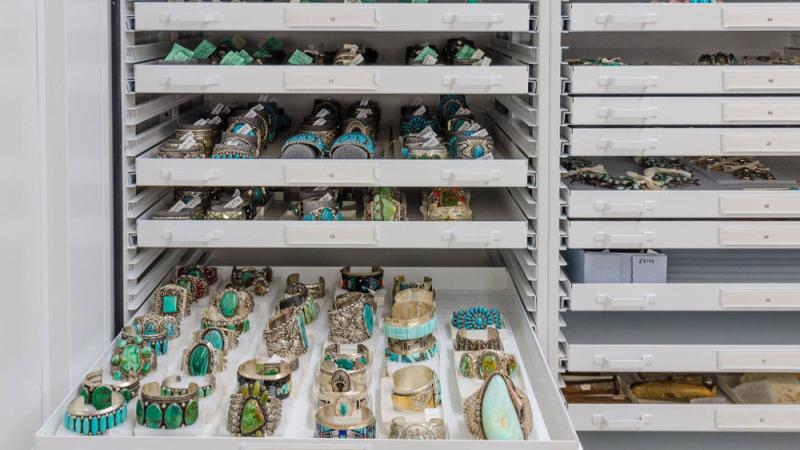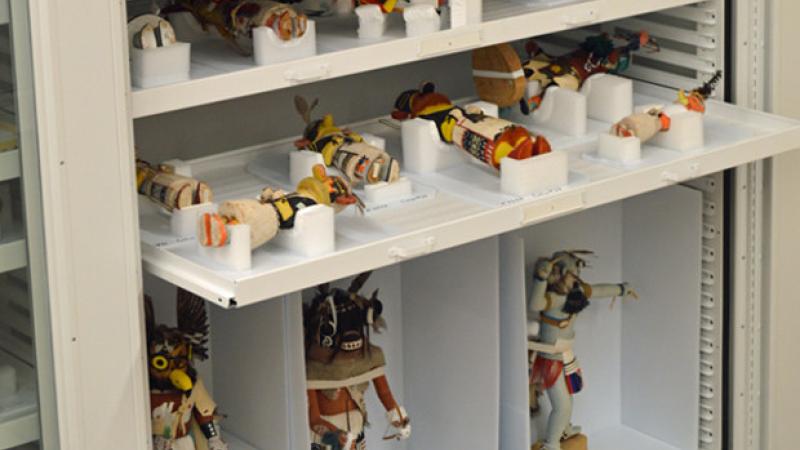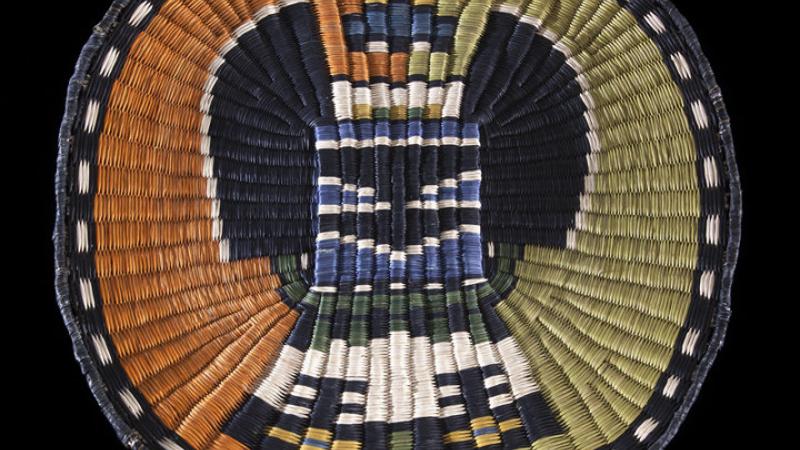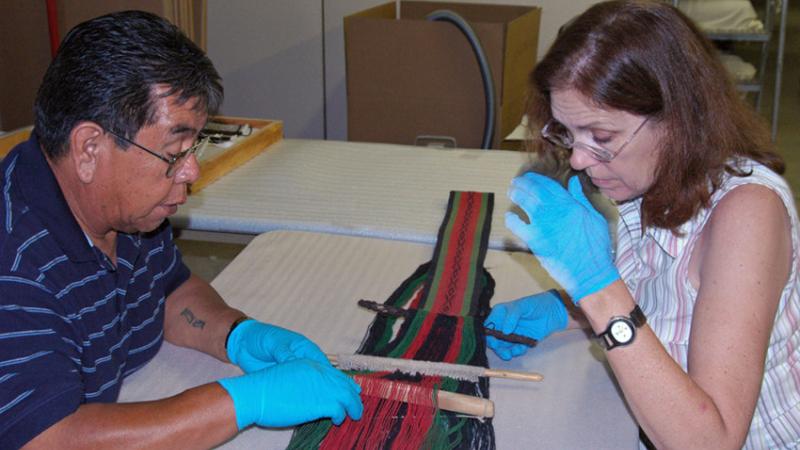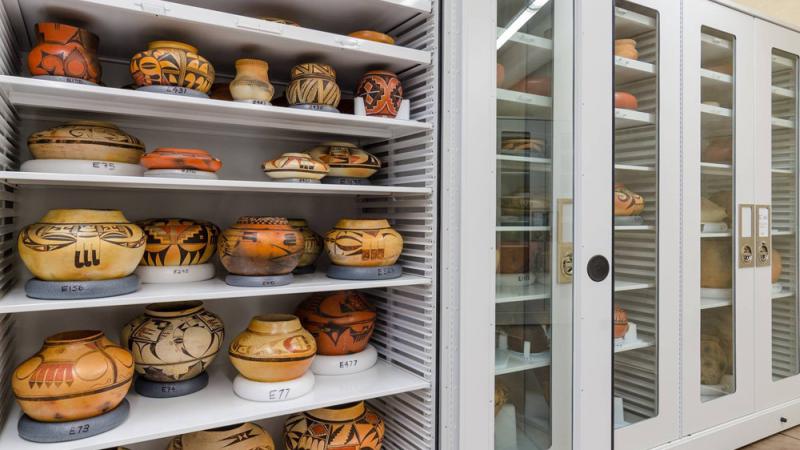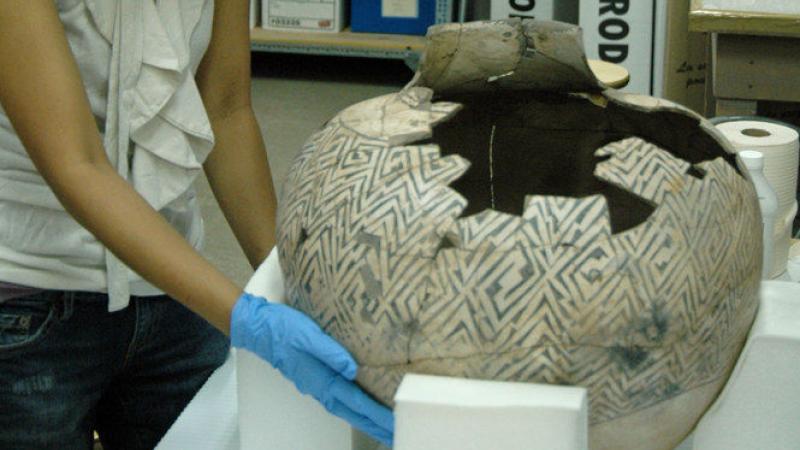50 States of Preservation: Museum of Northern Arizona in Flagstaff, Arizona
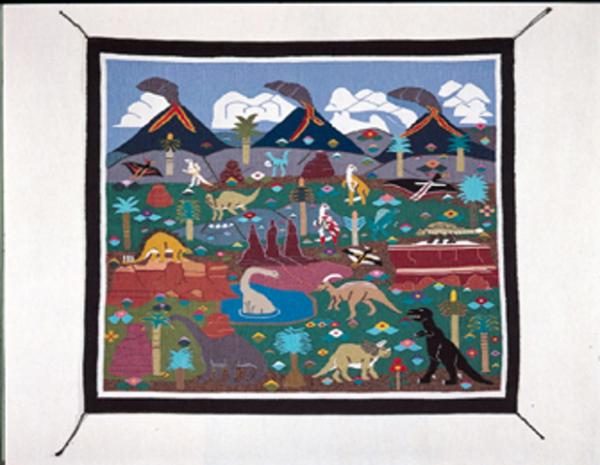
This Navajo Dinosaur pictorial rug was woven by Louise Nez and purchased at MNA’s 1991 Navajo Arts & Crafts Show (https://musnaz.org/heritage/). All of the dinosaurs have been identified to species by MNA’s paleontologists.
Courtesy of Museum of Northern Arizona.

This Navajo Dinosaur pictorial rug was woven by Louise Nez and purchased at MNA’s 1991 Navajo Arts & Crafts Show (https://musnaz.org/heritage/). All of the dinosaurs have been identified to species by MNA’s paleontologists.
Courtesy of Museum of Northern Arizona.
This feature is part of a series we call “50 States of Preservation,” in which we are touring small and mid-sized museums, libraries, historical societies, and other repositories across the country to show how they are helping to preserve the nation’s cultural heritage. Read other entries in the series here.
Inside the Museum of Northern Arizona (MNA) in Flagstaff, rays from the rising sun are cast onto the interior wall to mark the path between summer and winter solstices. The building captures dramatic views of the San Francisco Peaks and uses native Coconino sandstone and plants for its walls and landscapes. Staff from the museum consulted with local Native American tribes to integrate the natural landscape, address any concerns they had about its contents, and incorporate particular features they wanted, such as the orientation of the building’s entrance to the east. Founded in 1928 by a zoologist and an artist, the MNA seeks to foster an appreciation of the history and culture of the Colorado Plateau, which extends across the states of Arizona, Utah, Colorado, and New Mexico. Over the last 15 years, with the support of seven NEH awards through the Division of Preservation and Access, the MNA has been able to preserve its large holdings of Native American cultural objects, artworks, and archives, which are viewed by 80,000 visitors each year.
“The first NEH Preservation Assistance grant was transformative for MNA,” said MNA Collections Director Elaine Hughes, and “really set us on the path to making short- and long-term improvements.” That 2002 award allowed the MNA to hire conservator Jude Southward to help develop the museum’s first preservation plan, enabling great strides in preservation and paving the way for construction of the Easton Collection Center. Subsequent NEH awards funded tangible improvements in storing and preserving the collections: in 2004, to purchase a large, museum-quality storage cabinet to prevent harmful tarnishing of Hopi jewelry; in 2010, to rehouse and move the large katsina doll collection and the museum’s archival records; in 2012, to purchase four locking, fire-proof file cabinets to prevent loss of critical documents and archival materials; and in 2014, to rehouse acetate photographic negatives, which were rapidly disintegrating in their previous home.
The MNA’s collection of 650,000 objects tells the story of the Colorado Plateau’s people and natural environment. For example, nearly 1,000 Hopi and Zuni katsina dolls date from the 19th century to the present, and include the work of many well-known carvers. More than 5,000 prehistoric ceramics range from 500 CE to the mid-1600s and represent cultures including the Mogollon and the Anasazi. Thousands of manuscripts document the museum’s holdings, and more than 100,000 photographs, including early images of Navajo and Hopi peoples, allow tribal members and the public to view the region’s history and to understand better techniques and design elements used to create pottery, basketry, and painting. Along with tens of thousands of natural history specimens and object history documentation, donor correspondence, and many other materials, the Museum of Northern Arizona preserves the region’s human and natural history for visitors, researchers, and tribes.
The NEH grants allowed MNA to move their collections from substandard storage, where the materials were at an imminent risk of deterioration, and to plan for long-term preservation of these irreplaceable collections. “If not for funding provided by NEH and Institute of Museum and Library Services for our preservation efforts, the collections we care for would be in very dire conditions,” explained Hughes. “No matter the size of the grant, we are grateful for all of the support we’ve received.”
In every state, NEH supports organizations that preserve humanities collections. Preservation Assistance Grants for Smaller Institutions (PAGs) fund projects that help safeguard photographs, letters, documents, prints, moving images, sound recordings, maps, drawings, artworks, textiles, furniture, and artifacts, making them available for future generations. These collections help researchers, educators, and members of the public better understand the complex stories of the various cities, towns, and tribal groups that make up our nation. Since 2000, NEH has made nearly 2,000 Preservation Assistance Grants to small and mid-sized organizations to preserve and care for their humanities collections. In all 50 states, the District of Columbia, and Puerto Rico and the Virgin Islands, PAG awards have funded preservation assessments, purchase of shelving, environmental monitoring equipment, and preservation supplies, and training for staff. Organizations in all states and U.S. territories are eligible to apply, and the program encourages applications from those new to NEH. The next application deadline Preservation Assistance Grants for Smaller Institutions is May 2, 2017. If you have any questions about this grant program, please contact us at @email or 202-606-8570.
